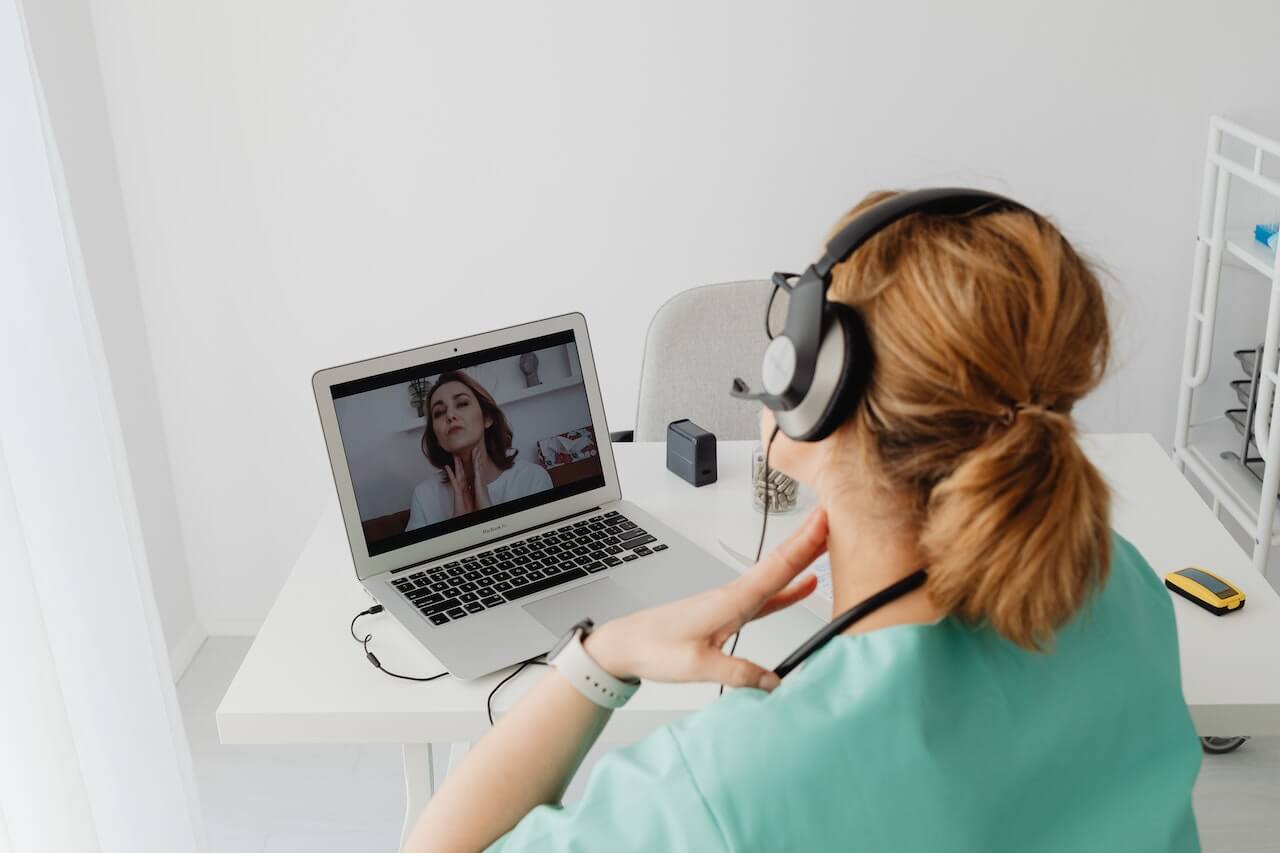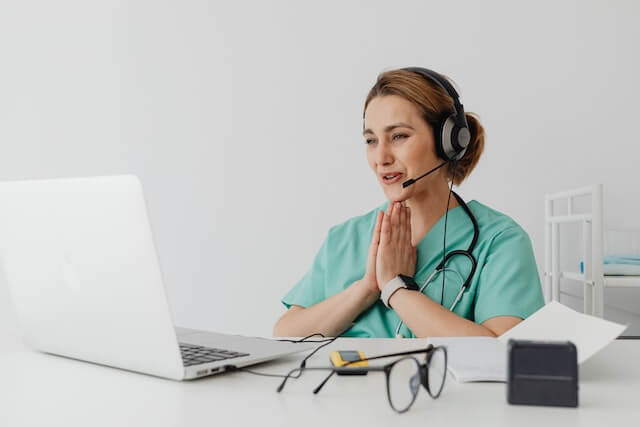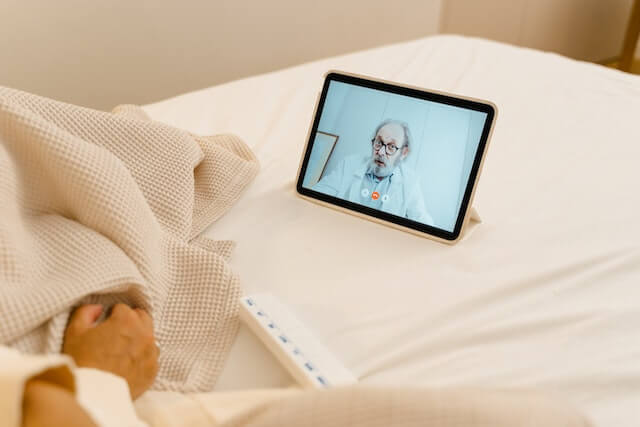
Telemedicine – what is it and how does it work? Discover the advantages and disadvantages of the telemedicine system for doctors and patients!
As everyone faces health problems, medical services are indispensable. Today, thanks to the evolution of technology and the Internet, telemedicine has emerged, a system through which people can receive medical assistance through phone calls, video calls or text messages. Telemedicine can be useful in many situations, from simple advice related to certain patient diseases to monitoring the health status of the chronically ill or even interpreting medical analyses. In this article you will learn more about telemedicine in general, about the system practiced in Romania and about its main advantages and disadvantages, both for patients and doctors.
1. Telemedicine in Romania – what is it and which medical services can be accessed through it?

Telemedicine is a solution for non-urgent medical problems that do not require a doctor’s visit. This does not replace a face-to-face consultation, but can be a good complement to it. The main purpose of telemedicine is to facilitate the care of a patient when the medical setting is in a different location. There are several telemedicine medical services in Romania that you can access through a private health insurance, including a second medical opinion of doctors abroad when you are not sure of the treatment or diagnosis received in the country.
1.1. What is telemedicine and when did it appear?
Telemedicine means the provision of medical services at a distance through real-time communication between the patient and the medical service provider, using audio and visual electronic means. Through the telecommunications infrastructure, patients benefit from much faster access to medical consultations, the establishment of a treatment, methods of preventing certain diseases, health monitoring and others.
Although remote healthcare services may seem like a fairly recent trend, in reality the practice of telemedicine dates back more than a century, closely following the history and evolution of communication and information technologies. With health being a primary concern, it’s no wonder that medical professionals quickly recognized the potential of these modern tools and harnessed them to provide remote medical services.
The term telemedicine was invented in the 1970s and comes from the Latin “medicus” and the Greek “tele” which translates as “healing at a distance”. New inventions in the field of communication tools, such as the telegraph or the telephone, gave rise to telemedicine, which was initially used by the military for medical purposes.
After a long progress over time, telemedicine has spread throughout the world with the advent of the Internet. This facilitated the transmission of medical data and communication through live video transmissions. Undoubtedly, the Internet has greatly improved the efficiency of telemedicine services, helping to provide remote healthcare in a much more cost-effective and easy manner.
Nowadays, the distance between doctors and patients is no longer a barrier, as telemedicine makes it possible to receive medical care at home or in any other private location.
1.2. Telemedicine in Romania – what medical services can you access through this system?
In Romania, telemedicine became known in the medical world after the start of the Covid 19 pandemic, becoming a method to improve doctor-patient communication, quite difficult to achieve in the context of that time. However, this system has proven its effectiveness, maintaining itself even today. Through it, people can get in touch with doctors, without the need for physical presence in an office.
Thus, telemedicine has become a practice adopted by both private and state healthcare providers. A remote consultation can involve more than a simple conversation between the doctor and the patient, sometimes it is necessary to transmit analyzes and investigations or the medical history.

Telemedicine has been legally regulated in Romania, establishing the possibility for public and private healthcare units to provide medical assistance through this system, regardless of whether or not they have a contract with the health insurance company. According to the introduced rules, the definition of telemedicine is the totality of remote medical services aimed at establishing a diagnosis, a treatment, monitoring certain conditions or sending recommendations regarding prevention methods of certain diseases.
Through telemedicine, it is possible to access medical services such as:
- Cardiology;
- Surgery;
- Oncology;
- Diabetes and nutritional diseases
- Orthopaedics;
- Dermatology;
- Allergology;
- Psychiatry;
- Psychology;
- General medicine;
- Internal Medicine;
- Gastroenterology;
- Nephrology;
- Other medical specialties.
1.3. What types of medical consultations exist in telemedicine?
It is important to know that telemedicine is not suitable for certain situations such as medical emergencies, sudden deterioration of health, car or household accidents or sudden changes in health. These circumstances are special cases that require a physical examination in a hospital or clinic.
This modern form of providing medical services is useful for people who need a remote consultation in order to make a diagnosis and establish an effective treatment. It is also useful for those who need closer monitoring of their health, those who suffer from chronic conditions and are undergoing a certain treatment, as well as patients who need the interpretation of medical results. In some cases, you can even consult doctors abroad for a second medical opinion.
Here are some concrete examples of medical services that you can access via telemedicine:
- Establishing a diagnosis and appropriate treatment following the appearance of more specific symptoms such as: wounds in certain parts of the body, allergies, skin rashes, ear pain, sore throat, cough or symptoms eyepieces.
- Monitoring of some chronic diseases of the patient.
- Monitoring the evolution of a treatment for various ailments.
- Interpreting the results of medical investigations.
- Recommendations regarding maintaining the effects of certain treatments.
- Recommendations for preventing the risks of illness.
- Psychological counseling.
Depending on the situation, the doctor may also recommend a face-to-face medical consultation after the one carried out via telemedicine.
Through remote healthcare services, patients can access various types of consultations such as video consultations, through which they talk to a specialist about the problem they have, audio consultations, through phone calls, or text consultations, which can be done through messages, medical chat or emails.
2. Telemedicine – the main advantages and disadvantages for doctors and patients
The impact and benefits of telemedicine are undeniable. Online or telephone healthcare services improve access to medical information and treatments, facilitate remote patient monitoring, and help doctors and patients save time and money. Even though telemedicine does not replace a traditional medical consultation, it has a lot of benefits for both clients and healthcare providers.
2.1. The advantages of telemedicine
The utility of telemedicine for the health system and society is obvious, even if these services still face many challenges in terms of their integration into the health system. A clear benefit is that telemedicine improves access to specialized treatments in rural areas, where there are usually no specialists. Also, remote monitoring of patients with chronic diseases can reduce the number of hospitalizations by improving their quality of life.
Here are all the more concrete advantages of implementing an effective telemedicine system from the patient’s perspective:
- Time and money are saved by eliminating travel and related expenses. This is also useful for patients with minor medical problems that do not require urgent care and for routine check-ups for patients with chronic conditions.
- Access is much simpler and faster. Telemedicine offers the opportunity to provide medical services to patients who live in rural areas or further away from a doctor’s office or clinic. Also, patients who cannot travel to an appointment due to their health condition can receive care that they would not otherwise have access to.
- Through telemedicine, patients can more easily benefit from preventive care.
- Decreases the risk of contamination. Through telemedicine, sick people can receive assistance without going to a medical facility, eliminating the risk of infecting other people or themselves. Less exposure to germs helps everyone, especially the chronically ill, pregnant women, the elderly, or the immunocompromised.
- Provides a greater degree of comfort. The possibility to benefit from a medical consultation right from your own home increases the patient’s comfort level, improving communication with the specialist.
- Through telemedicine, parents can get answers or even a diagnosis and treatment for their children when they get sick. Instead of searching the Internet for information that may not be relevant, parents can use telemedicine services to quickly connect with doctors.

The provision of remote medical services also offers benefits for doctors:
- Allows better patient monitoring.
- Ensures much more effective communication between doctor and patient, which can be an excellent basis for future treatment.
- Gives doctors the ability to educate patients and provide them with useful information much faster and exactly when they need it.
- Patients can be directed much more easily to the right department or specialist.
- Telemedicine facilitates doctors’ access to the patient’s file.
- With affordable and effective healthcare, in many cases, clinics can ensure a higher degree of patient satisfaction.
2.2. Disadvantages of telemedicine
Like any branch of the healthcare system, telemedicine also has some disadvantages. Even though the benefits far outweigh them, it is important to be aware of certain drawbacks as well.
Therefore, telemedicine faces the following challenges:
- The online consultation is not valid for any condition, sometimes a visit to the doctor’s office is necessary for a correct diagnosis and treatment.
- To benefit from online medical services at home, the people involved must have digital knowledge. This is an impediment for older people.
- In the absence of physical interaction between doctor and patient, trust can be more difficult to gain.
As healthcare providers become more interested in finding more efficient ways to deliver healthcare, the role of telemedicine is growing greatly and will continue to grow in the coming years. As this field evolves, however, closer regulatory oversight will be needed to ensure patient protection. Thus, there will be a need for secure communication platforms that can guarantee the confidentiality and security of the personal data of the parties involved, as well as the respect of fundamental rights and freedoms, in accordance with the legislation in force.
In other words, telemedicine is a fast, convenient and efficient alternative to traditional medical services and could play an important role in the health field as it is applied on a large scale. Even though it has some limitations, its benefits are varied. From better monitoring of a patient’s health to increasing their comfort level, there are numerous advantages for which telemedicine brings added value.
The telemedicine system is a way to provide high-quality care to patients, who can more easily get in touch with specialists to seek a quick solution to their health problems without leaving the comfort of their homes. The future of this system is full of possibilities with the advent of modern communication equipment.
In conclusion, the use of telemedicine appeared many years ago but it became very popular during the Covid 19 pandemic. This system is not a substitute for in-person clinical consultations, but it can be an important addition to patient care. Telemedicine has many advantages, providing access to a specialist’s opinion and related medical recommendations, being a more convenient and economical option.
Photo source: pexels.com.

